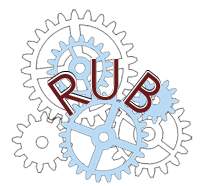Proszę używać tego identyfikatora do cytowań lub wstaw link do tej pozycji:
http://hdl.handle.net/11320/18912Pełny rekord metadanych
| Pole DC | Wartość | Język |
|---|---|---|
| dc.contributor.author | Grzegorzewska, Iwona | - |
| dc.contributor.author | Pastwa-Wojciechowska, Beata | - |
| dc.date.accessioned | 2025-10-01T06:59:04Z | - |
| dc.date.available | 2025-10-01T06:59:04Z | - |
| dc.date.issued | 2021 | - |
| dc.identifier.citation | Resocjalizacja Polska Nr 22, 2021, s. 123-138 | pl |
| dc.identifier.issn | 2081-3767 | - |
| dc.identifier.uri | http://hdl.handle.net/11320/18912 | - |
| dc.description.abstract | Artykuł ma charakter przeglądowy. Zaprezentowane i omówione zostały zagadnienia związane z diagnozą prognostyczną w resocjalizacji nieletnich sprawców przestępstw. Skoncentrowano się na takich zagadnieniach, jak: istota diagnozy prognostycznej, charakterystyka nieletnich sprawców przemocy seksualnej, uwarunkowania powrotu do przestępczości nieletnich sprawców, specyfika szacowania powrotności do przestępstwa seksualnego nieletnich oraz resocjalizacja nieletnich w kontekście diagnozy prognostycznej. Przyjęcie takiej konstrukcji rozważań pozwala na analizę wczesnych predyktorów przestępczości seksualnej nieletnich a tym samym zidentyfikowanie ścieżek rozwojowych o odrębnych czynnikach przyczynowych. Podejście takie ma istotne znaczenie teoretyczne i aplikacyjne albowiem daje szansę na rozróżnienie przyczyn od konsekwencji, a tym samym zrozumienie procesów rozwojowych w kontekście normatywnym i nienormatywnym. Z kolei w aspekcie diagnostycznym i interwencyjnym pozwoliłoby na uwspólnienie tych czynności i dopasowanie ich do okresu rozwojowego. | pl |
| dc.description.abstract | This article is for review. Issues related to prognostic diagnosis in the rehabilitation of juvenile offenders have been presented and discussed. The focus was on issues such as the substance of the prognostic diagnosis, the characteristics of juvenile perpetrators of sexual violence, the conditions for the return to juvenile deeds, the specificity of estimating the return to sexual crime of minors and the rehabilitation of minors in the context of prognostic diagnosis. The adoption of such a design of considerations makes it possible to analyse the early predictors of sexual crime of minors and thus to identify developmental pathways with distinct causal factors. Such an approach is of significant theoretical and application importance, for it offers an opportunity to distinguish between causes and consequences and thus to understand development processes in a normative and non-normative context. On the other hand, from a diagnostic and interventional point of reference, it would make it possible to make these activities common and adapt them to the development period. | pl |
| dc.language.iso | pl | pl |
| dc.publisher | Fundacja Pedagogium | pl |
| dc.rights | Licencja Creative Commons Uznanie autorstwa 4.0 (CC-BY) | pl |
| dc.rights.uri | https://creativecommons.org/licenses/by/4.0/ | - |
| dc.subject | agresja seksualna | pl |
| dc.subject | nieletni sprawcy | pl |
| dc.subject | szacowanie ryzyka | pl |
| dc.subject | resocjalizacja | pl |
| dc.subject | sexual aggression | pl |
| dc.subject | juvenile offenders | pl |
| dc.subject | risk assessment | pl |
| dc.subject | rehabilitation | pl |
| dc.title | Znaczenie diagnozy prognostycznej w resocjalizacji nieletnich sprawców przestępstw seksualnych | pl |
| dc.title.alternative | The importance of prognostic diagnosis in the rehabilitation of juvenile sexual offenders | pl |
| dc.type | Article | pl |
| dc.rights.holder | Licencja Creative Commons Uznanie autorstwa 4.0 (CC-BY) | pl |
| dc.identifier.doi | 10.22432/pjsr.2021.22.08 | - |
| dc.description.Affiliation | Iwona Grzegorzewska - Uniwersytet Gdański | pl |
| dc.description.Affiliation | Beata Pastwa-Wojciechowska - Uniwersytet Gdański | pl |
| dc.description.references | Abel G.G., Mittleman M.S., Becker J.V., 1985, Sex offenders: Results of assessment and recommendations for treatment, [w:] M.H. Ben-Aron, S.J. Hucker, C.D. Webster (red.), Clinical Criminology: The assessment and treatment of criminal behavior, s. 207–220. | pl |
| dc.description.references | ATSA, 2001, Practice standards and Guidelines for members off the Association for the treatment of sexual abuser, Beaverto, OR: Author. | pl |
| dc.description.references | Barbaree H.E., Hudson S.M., Seto M.C., 1993, Sexual assault in society: The role of the juvenile sex offender, [w:] Barbaree H.E., Marshall W.L., Hudson S.M. (red), The juvenile sex offender, London: Guildford Press, s. 1–24. | pl |
| dc.description.references | Beisert M., 2007, Seksualność w cyklu życia człowieka, Warszawa: PWN. | pl |
| dc.description.references | Bonner B.L., Walker C.E., Berliner L., 1999, Children with sexual behavior problems: assessment and treatment, Final Report, Grant No. 90–CA–1469, Administration of Children, Youth, and Families, Department of Health and Human Services, Washington, DC. | pl |
| dc.description.references | Borduin C.M., Schaeffer C.M., 2001, Multisystemic treatment of juvenile sexual offenders: A progress report, „Journal of Psychology and Human Sexuality”, 13, s. 25–42. | pl |
| dc.description.references | Caldwell M.F., 2002, What we do not know about juvenile sexual reoffense risk, „Child Maltreatment”, 7, s. 291–302. | pl |
| dc.description.references | Chaffin M., Berliner L., Block R., Johnson T.C., Friedrich W.N., Lyon T.D., et al., 2006, Report of the ATSA task force on children with sexual behavior problems, Beaverton, OR: Association for the Treatment of Sexual Abusers. | pl |
| dc.description.references | Caldwell M.F.., 2002, What we do not know about juvenile sexual reoffense risk, „Child Maltreatment”, 7, s. 291–302. | pl |
| dc.description.references | Coffey P., 2006, Forensic Issue in Evaluating Juvenile Sexual Offenders, [w:] Prescottt D.S. (red.), Risk and Assesment of Youth Have Sexually Abused, Oklahoma: Wood Barns Publishing. | pl |
| dc.description.references | Dishion T.J., Dodge K.A., 2005, Peer contagion in interventions for children and adolescents: Moving towards an understanding of the ecology and dynamics of change, „Journal of Abnormal Child Psychology”, 33, s. 395–400. | pl |
| dc.description.references | Elliott D.S., 1994, Serious violent offenders: Onset, developmental course and termination, „Criminology”, 32, s. 1–22. | pl |
| dc.description.references | Faller K.C., 1988, Child sexual abuse: An interdisciplinary manual for diagnosis, case management, and treatment, Columbia University Press. | pl |
| dc.description.references | Felińska A., Grzegorzewska I., 2010, Opiniowanie psychologiczno-sądowe nieletnich sprawców przestępstw seksualnych, [w:] B. Gulla, I. Niewiadomska, M. Wysocka-Pleczyk (red.), Białe plamy w psychologii sądowej, Kraków: WUJ, s. 183–197. | pl |
| dc.description.references | Finkelhor D., Ormrod R., Chaffin M., 2009, Juveniles who commit sex offenses against minors, „Juvenile Justice Bulletin”, OJJDP, Office of Justice Programs. | pl |
| dc.description.references | France K.G., Hudson S.M., 1993, The conduct disorders and the juvenile sex offender, [w:] H.E. Barbaree, W.L. Marshall, S.M. Hudson (red.), The juvenile sex offender New York: Guilford Press, s. 225–234. | pl |
| dc.description.references | Grzegorzewska I., Cierpiałkowska L., 2020, Psychopatologia rozwojowa. Integrujące podejście do zdrowia i zaburzeń dzieci i młodzieży, [w:] I. Grzegorzewska, L. Cierpiałkowska, A.R. Borkowska, Psychologia kliniczna dzieci i młodzieży, Warszawa: PWN, s. 137–164. | pl |
| dc.description.references | Hanson R.K., Bussière M.T., 1998, Predicting relapse: A meta-analysis of sexual offender recidivism studies, „Journal of Consulting and Clinical Psychology”, 66, s. 348–362. | pl |
| dc.description.references | Kaufman K., Hilliker D., Daleiden E., 1996, Subgroup differences in the modus operandi of adolescent sex offenders, „Child Maltreat”, 1, s. 17–25. | pl |
| dc.description.references | Kruh I., Frick P., Clements C., 2005, Historical and Personality Correlates to the Violence Patterns of Juveniles Tried as Adults, „Criminal Justice and Behavior”, nr 1, s. 69–96. | pl |
| dc.description.references | Laws D.R., 1999, Relapse prevention: The state of the art, „Journal of Interpersonal Violence”, 14, s. 285–302. | pl |
| dc.description.references | Laws D.R., 2003, The rise and fall of relapse prevention, „Australian Psychologist”, 38, s. 22–30. | pl |
| dc.description.references | Lee R.J., Cottle C.C., Heilbrun K., 2003, The prediction of recidivism in juvenile sexual offenders: A meta-analysis, Manuscript submitted for publication. | pl |
| dc.description.references | Letourneau E.J., Borduin C.M., 2008, The Effective Treatment of Juveniles Who Sexually Offend, „An Ethical Imperative, Ethics Behavior”, 1; 18(2/3), s. 286. | pl |
| dc.description.references | McLeer S.V., Dixon J.F., Henry D., Ruggiero K., Escovitz K., Niedda T., Scholle R., 1998, Psychopathology in nonclinically referred sexually abused children, „Journal of the American Academy of Child and Adolescent Psychiatry”, 37, s. 1326–1333. | pl |
| dc.description.references | Millon T., Davis R., Millon C., Escovar L., Meagher S., 2005, Zaburzenia osobowości we współczesnym świecie, Warszawa IPZ, PTP. | pl |
| dc.description.references | Miranda A.O., Corcoran C.L., 2000, Comparison of perpetration characteristics between male juvenile and adult sexual offenders: Preliminary results, „Sex Abuse”, 12, s. 179–188. | pl |
| dc.description.references | Niewiadomska I., 2007, Osobowościowe uwarunkowania skuteczności kary pozbawienia wolności, Lublin, Wydawnictwo KUL. | pl |
| dc.description.references | Pastwa-Wojciechowska B., Grzegorzewska I., 2020, Nieletni jako sprawcy przestępstw, [w:] I. Grzegorzewska, L. Cierpiałkowska, A.R. Borkowska, Psychologia kliniczna dzieci i młodzieży, Warszawa: PWN, s. 569–602. | pl |
| dc.description.references | Pastwa-Wojciechowska B., Grzegorzewska I., 2020, Niezamierzony optymizm czy nieuzasadniony pesymizm w procesie oceny szacowania ryzyka powrotu do przestępstwa seksualnego nieletnich, w druku. | pl |
| dc.description.references | Prentky R., Pimental A., Cavanaugh D., 2006, March, Predictive validity of the JSOAP-II on a child welfare sample. Poster presented at the 2006 Conference of the American Psychology–Law Society, St. Petersburg, Florida. | pl |
| dc.description.references | Rich P., 2003, Understanding, Assessing and Rehabilitating Juvenile Sexual Offenders, John Wiley Sons, Inc., s. 111–116. | pl |
| dc.description.references | Rombouts S., 2005, Development of a Risk Assessment Checklist for Juvenile Sexual Offenders: a Meta-Analytic Approach, Queensland: Griffith Uniwersity. | pl |
| dc.description.references | Rudd, Herzberger, 1999, Brother-Sister Incest – Father-Daughter Incest: A comparison of characteristics and consequences, „Child Abuse and Neglect”, 23(9), s. 915–928. | pl |
| dc.description.references | Ryan G., Lane S. (red.), 1997, Juvenile sexual offending. Causes, Consequences and Correction, San Francisco: John Wiley and Sons. | pl |
| dc.description.references | Snyder H.N., 2000, Sexual assault of young children as reported to law enforcement: Victim, incident, and offender characteristics. Washington, DC: U.S. Department of Justice, Office of Justice Programs, Bureau of Justice Statistics. Retrieved January 12, 2009 from: http://www.ojp.usdoj.gov/bjs/pub/pdf/saycrle.pdf | pl |
| dc.description.references | Townsend C., Rheingold A.A., 2013, Estimating a child sexual abuse prevalence rate for practitioners: studies. Charleston, S.C., Darkness to Light. Retrieved from www.D2L.org | pl |
| dc.description.references | Trivits L.C., Reppucci N.D., 2002, Application of Megan’s Law to juveniles, „American Psychologist”, 57, s. 690–704. | pl |
| dc.description.references | Worling J.R., Curwen T., 2001, The Erasor: Estimate of Risk of Adolescent Sexual recidivism, Toronto, Ontario: Safe- T Program, Thistletown Regional centre. | pl |
| dc.description.references | Worling J.R., Långström N., 2006, Risk of sexual recidivism in adolescents who offend sexually: Correlates and assessment, [w:] H.E. Barbaree, W.L. Marshall (red.), The juvenile sex offender (2nd ed.), New York: Guilford Press, s. 219–247. | pl |
| dc.description.references | World Report on Violence and Health, 2002, Krug E.G., Dahlberg L.L., Mercy J.A., Zwi A.B., Lozano R. (red.), Geneva:World Health Organization. | pl |
| dc.description.references | Zimring F.E.., 2004, An American travesty: Legal response to adolescent sexual offen ding, Chicago: University of Chicago Press. | pl |
| dc.identifier.eissn | 2392-2656 | - |
| dc.description.number | 22 | pl |
| dc.description.firstpage | 123 | pl |
| dc.description.lastpage | 138 | pl |
| dc.identifier.citation2 | Resocjalizacja Polska | pl |
| Występuje w kolekcji(ach): | Resocjalizacja Polska, 2021, nr 22 | |
Pliki w tej pozycji:
| Plik | Opis | Rozmiar | Format | |
|---|---|---|---|---|
| RP_22_2021_I_Grzegorzewska_B_Pastwa_Wojciechowska_Znaczenie_diagnozy_prognostycznej_w_resocjalizacji.pdf | 159,86 kB | Adobe PDF | Otwórz |
Pozycja ta dostępna jest na podstawie licencji Licencja Creative Commons CCL


